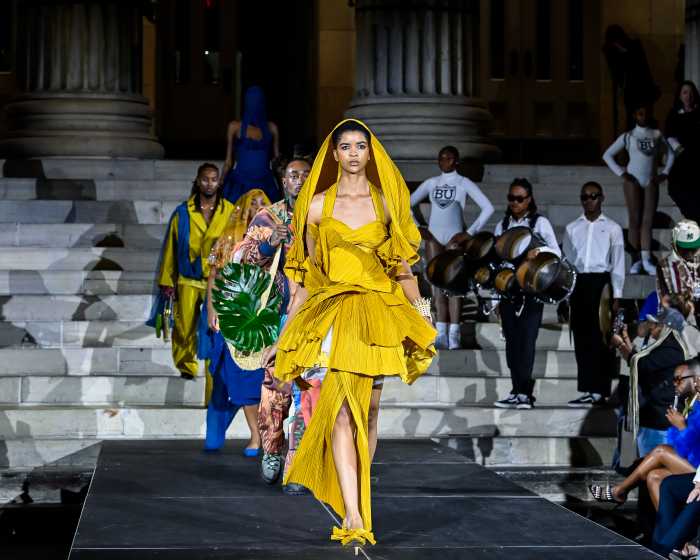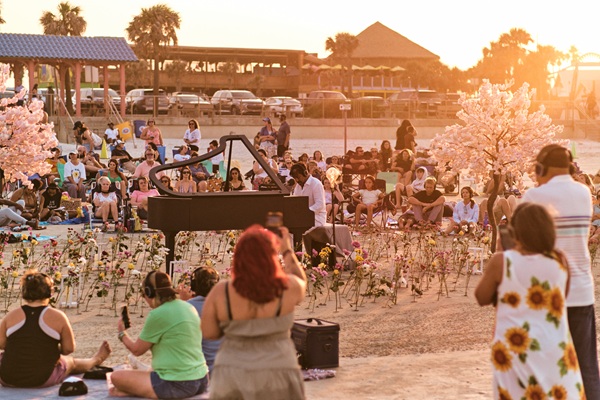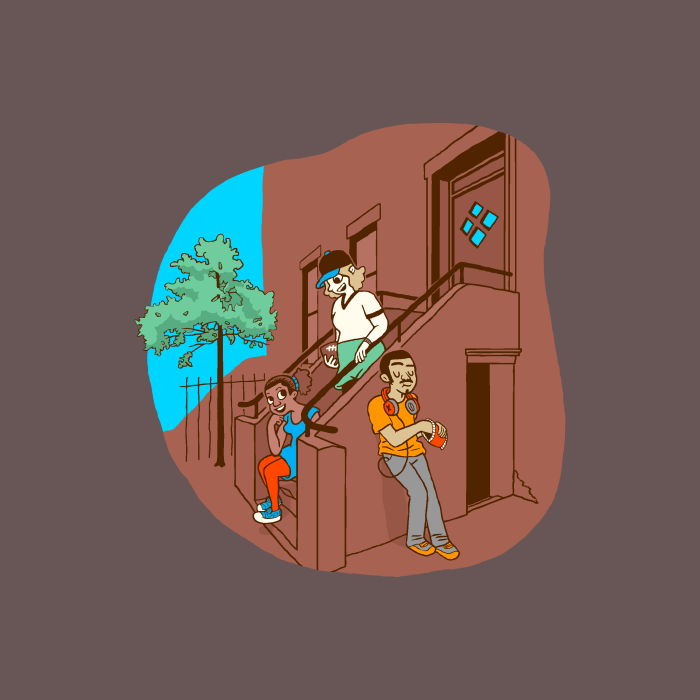As galleries across New York struggle to
mark the five-year anniversary of the terrorist attacks of Sept.
11, 2001, the Brooklyn Museum is approaching the task from a
unique perspective. "Looking Back From Ground Zero: Images
From The Brooklyn Museum Collection," which is an exhibition
of paintings, photographs, prints and drawings from the Museum’s
permanent collection, reflects on the Lower Manhattan area around
the World Trade Center site before, as well as after, the attack.
The result is somewhere in between nostalgia and horror, tapping
into that hidden feeling in all of us that still – half a decade
later – can’t believe the Twin Towers are gone.
That sense of disbelief pervades the exhibition from its opening
display, Gerard Maynard’s photograph of Ground Zero snapped on
Sept. 11, 2003 that is so gargantuan that one must step back
to comprehend the eerie smoothness of the dirt marking the gaping
hole. Many of the works that follow require such physical distancing;
not because of their size, but because grappling with the quiet
emotion inherent in these depictions of the lost towers necessitates
a few deep breaths, and perhaps the squeeze of a loved one’s
hand.
There was a lot of hand-squeezing in the gallery on a recent
rainy Saturday when GO Brooklyn visited the exhibit. There was
also a lot of explaining to do, as children inquired about the
differences in the photographs in the first section of the exhibit
– an historical snapshot of life in Lower Manhattan, known as
"Radio Row," before and during the construction of
the Towers – and the second, depicting the aftermath of the attack.
A short film, "Building the World Trade Center," answers
some of those questions, although it is difficult to regard the
construction workers, hoisting massive steel beams, without recalling
the images of people falling that have been so indelibly burned
into our collective memory. (It’s also nauseating to see the
aerial views of the towers, creating a horrifying sense of the
decision many inside the buildings faced on that day.) We learn
from the film that those beams, or "trees," provided
the buildings with their strength, and gain a renewed appreciation
for the painstaking effort that went into the creation of these
monumental structures but also a heightened incredulity that
it took mere minutes to flatten them.
The exhibit reminds us of a community that existed before the
towers were erected. One hundred and sixty small buildings were
demolished to make way for the World Trade Center, which opened
in 1972.
Before there was anything to compare it to, many truly mourned
the metamorphosis of that old way of life in Lower Manhattan,
co-curator Marilyn Kushner told GO Brooklyn.
"We discovered that there was a lot that was lost when that
area was demolished to make way for the World Trade Center buildings,"
Kushner said. "What happened on 9-11 was an unspeakable
tragedy, and nothing can equal the great loss sustained by those
who lost their family and friends on that day. But interestingly,
the earlier loss of buildings created a big controversy in and
of itself."
The exhibit also tackles the misconceptions many of us harbored
before 9-11 changed our lives forever. As it turned out, the
towers were not indestructible; although Minoru Yamasaki, the
architect of the buildings, notes that the driving force behind
the construction of the towers was not to boast of America’s
economic omnipotence, but to symbolize world peace: "The
World Trade Center is a living symbol of man’s dedication to
world peace, a representation of man’s belief in humanity."
Given those ambitions, it’s even more heart-wrenching to grapple
with the portion of the exhibit detailing the towers’ destruction,
for if the World Trade Center symbolized world peace, what does
it mean for us now that they are gone? The exhibit can’t answer
that question and doesn’t attempt to. Instead, we are left to
face the raw images captured by G.N. Miller, one of the first
photographers allowed access to the area in the hours following
the attack. The jarring scenes – a pair of shoes abandoned in
the dust near the Wall Street subway station, a fireman praying
beside the empty jacket and hat of a fallen comrade – are stark
reminders of the collective terror of those first few hours.
There are more startling displays, too, that reach beyond the
photographic medium. Christopher Drager’s 5,000-piece jigsaw
puzzle depicts the mulch of Ground Zero in 2003, while Jennifer
Pun’s alphabetical listing of the people who died in the attack
is superimposed on an image of Lower Manhattan. A graphic documentation
of actual phone conversations and messages on 9-11 by Jessica
Green is shielded in a glass cube, making it hard to read, but
also, perhaps, protecting us from the pain of getting too close
to those memories.
And J. Meejin Yoon’s interactive display, "Absence,"
allows museum-goers to finger the pages of a tiny, all-white
120-page book, each page – one for every floor of the towers
– blank except for a pinhole and two cutout squares. (GO Brooklyn
overheard one father explain it to his child this way: "’Absence’
means a negative space. It means there is now air where the buildings
were.")
But one of the most poignant elements of the exhibition comes
in the form of our own voices: in the final section, museum-goers
are invited to share their written thoughts in a book. The result
is telling. Thumbing through the inscriptions, one witnesses
an array of emotions, echoing sentiments ranging from "Bush
let them come down" to "God Bless America" to
"Everyone’s insides are screaming as they see these pictures"
to "I’m still pissed off at them. Maybe someday I’ll heal."
These words are the closest thing we have to comprehension; identifying
with the uninhibited grief, anger and sadness of others in our
community is one way for us to begin to try and make sense of
it all.
While the exhibition attempts to close on a redemptive note –
Sara Parkel’s string of Tibetan prayer flags – many may leave
with images of terror more prevalent in their minds. That’s because
the exhibition space itself, with its blue-and-gray painted walls
and imitation steel "trees," hauntingly evokes a sense
of actually being inside the absent buildings.
Nor does the exhibition feel like resolution, which – for many
of us – remains elusive, even five years later. Or as one toddler
leaving the exhibition put it to his father, "But Daddy,
why did the towers fall down?" It’s a question that many
of us are still struggling to answer.
"Looking Back From Ground Zero:
Images From The Brooklyn Museum Collection" is on display
through Jan. 7, 2007 at the Brooklyn Museum, 200 Eastern Pkwy.
at Washington Avenue in Prospect Heights. Suggested contribution:
$8; $4, students with valid ID; $4, adults 65 and older; free,
members and children younger than 12. For more information, call
(718) 638-5000 or visit the Web site www.brooklynmuseum.org.

























